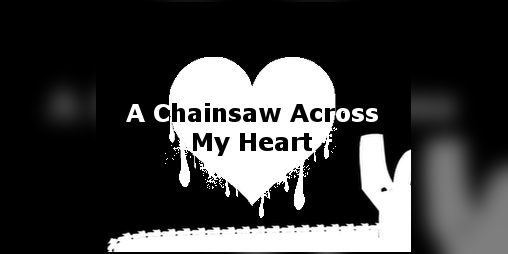

The first version of this book that I wrote, back in 2013, kind of comes from me compulsively reading Jeffrey Eugenides’ The Virgin Suicides. What was it like to write this book? How many drafts did it take, and how closely did your final draft resemble your first? That all made her the right person to lead My Heart is a Chainsaw. You can usually figure out the protagonist by that, and by who’s in continual jeopardy, and who has the most potential to change.

But Jade’s voice was the most compelling of the three, and she had the most at stake. Next time, she was one of three narrators-she was first, typing on a computer in the supply room of the sheriff’s offices, Hardy was second, dictating into a hand-held recorder while killing a bottle of bourbon, and Letha Mondragon was third, talking into the camera on her laptop for a story time installment of her makeup tutorial on YouTube. The first time I saw her, she was trying to escape Proofrock by writing a tell-all book about what-all went down. Then she sort of just stood up from the shallows. Proofrock was, Indian Lake was, and Terra Nova, Camp Blood. She wasn’t there, the first couple-three drafts. How did you create or discover this character, and what made her the right person to tell this story?

This interview has been edited and condensed for clarity. I was lucky enough to speak with Jones about his novel. (Fittingly, my review copy of this book arrived in a book jacket made to look like a VHS videotape cover.) Fresh off a double win at the Shirley Jackson Awards for his previous novel, The Only Good Indians, and novella, Night of the Mannequins, Jones lets his slasher film genre expertise shine in his heroine, Jade Daniels-a half Native, half white girl stuck in an abusive household in a dead-end Idaho town with nothing but her deep knowledge of the conventions of horror films to survive. New York Times bestselling author Stephen Graham Jones flashes his mastery of horror film history and raw teen angst in his novel, My Heart is a Chainsaw.


 0 kommentar(er)
0 kommentar(er)
